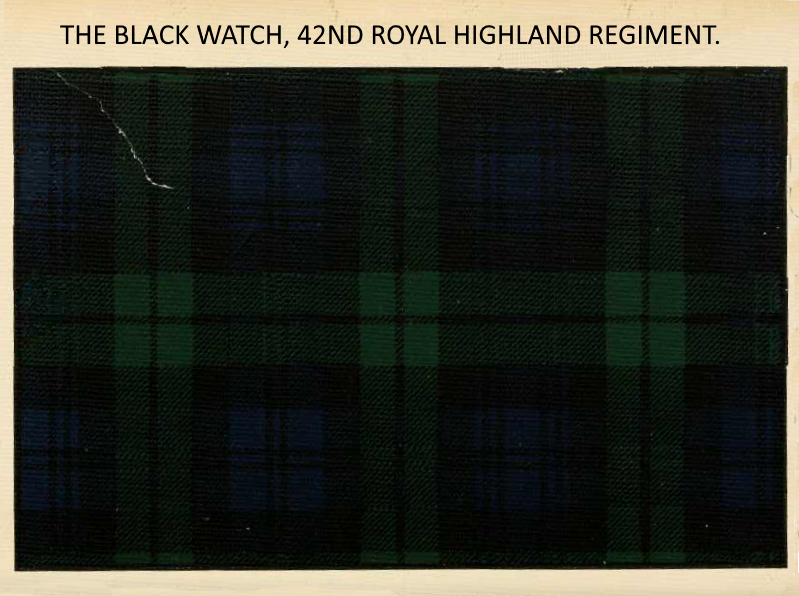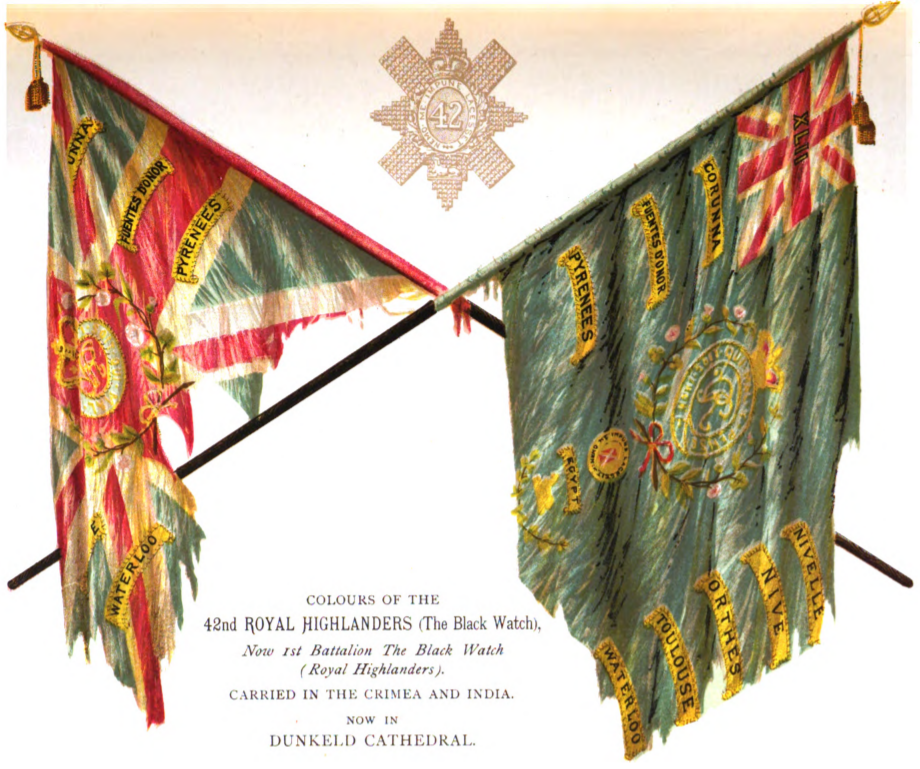The Black Watch

The history of this celebrated regiment is as follows, In 1729 the Government entertained the idea of making use of the Highlanders as a means of protecting the country which was then in an unsettled state, and to this end six companies were formed ; three companies consisted of 100 men each and other three of 75 men each. The first three companies were commanded by Lord Lovat, Sir Duncan Campbell of Lochnell, and Colonel Grant of Ballindalloch. The three smaller companies by Colonel Alexander Campbell of Finab, John Campbell of Carrick, and George Munro of Culcairn as Captain Lieutenants ; to distinguish them from Royal troops they wore tartans of a dark colour from which they derived the name “Black Watch ;” the men were all of respectable families, many of them being sons of gentlemen. Their duties consisted in carrying out the ” Disarming Act ” and preventing depredations ; for this purpose they were quartered in small detachments in various parts of the country, chiefly in the more troubled districts of the Highlands, where the Jacobite clans of Cameron, Stuart, MacDonald, and Murray, rendered their presence necessary to prevent a sudden rising, the various companies acting independently of each other. In 1740 the Government determined to add to their number, which was raised to 1000 men who mustered for the first time near Taybndge, Perthshire. Up to this period each company was dressed in tartans selected by its commander, but as the companies were now to form one regiment, it was necessary to have a uniform dress. The first Colonel, Lord Crawford, being a Lowlander, and having no tartan of his own, a new tartan different from any other was manufactured for the whole regiment. This ultimately became the well-known 42nd or Black Watch ; the tartan is composed of various shades of black, green, and blue. From the colour of the uniform of the regular troops, they were called red soldiers (Saighdearan Deary) ; the Highlanders from their sombre dress, the Black Watch (Freiceadan Dubh). Mr Cameron in his ” Military History,” in writing of this regiment, thus eulogises the Highland soldiers. quote, The Highlanders of Scotland have been conspicuous for the possession of every military virtue which adorns the character of the hero who has adopted the profession of arms. Naturally patient and brave, and innured to hardship in their youth, in the hilly districts of a northern climate, these warlike mountaineers have always proved themselves a race of lion-like champions, valiant in the field, faithful, constant, generous in the hour of victory, and endued with calm perseverance under trial and disaster.” The Black Watch, since its formation, has taken a brilliant part in nearly every war its country has been engaged in and has fought with honour in every quarter of the globe. The more important engagements include Egypt, Corunna, Fuentes d’Onor, Pyrenees, Nivelle, Nive, Orthes, Toulouse, Peninsula, Waterloo, Alma, Sevastopol, Lucknow, Ashanti, Egypt, Tel-el- Kebir, Nile, and Kirbekan. On its colours it bears the names of ” Pyrenees, Nivelle, Nive, Orthes, Toulouse, and Peninsula.”
- THE SCOTTISH CLANS AND THEIR TARTANS, W. & A. K. JOHNSTON, LIMITED,

Colours of the 42nd Royal Highlanders (The Black Watch) – Now 1st Battalion The Black Watch 
Black Watch or 42nd Royal Highlanders